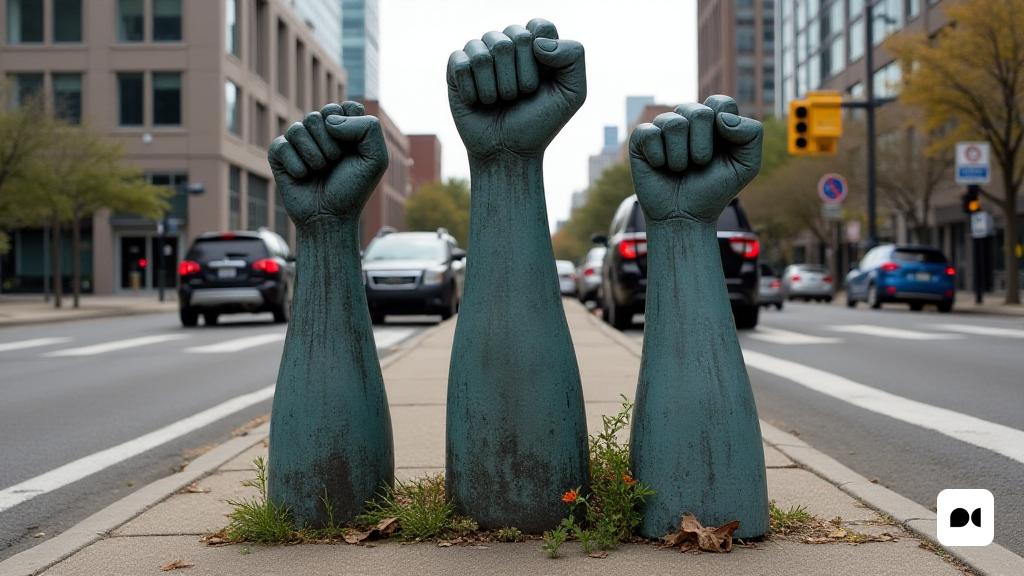The Heart of a Movement
At the intersection of 38th Street East and Chicago Avenue in Minneapolis, a profound transformation has occurred since the tragic death of George Floyd. This location has transcended its geographical significance to become a powerful symbol of social justice, art, and collective memory. The weathered statues of raised fists stand as solemn sentinels, reminding visitors of a pivotal moment that ignited a nationwide conversation about systemic racism and police brutality.
Community Response and Collective Healing
In the immediate aftermath of Floyd’s death, the community rallied together in a remarkable display of solidarity. Streets were barricaded, and residents came together to share food and provide aid to demonstrators. Jeanelle Austin, a local who has taken on the role of memorial caretaker, recalls the atmosphere of unity and healing that enveloped the area. ‘This place became a sanctuary for those seeking solace amidst the chaos,’ she reflects, emphasizing the significance of community in times of grief.
A Living Memorial
Over the years, the memorial has evolved, adorned with tributes ranging from flowers to handmade signs. Each item left behind tells a story of love, loss, and remembrance. The question remains: how should this site be honored moving forward? As city officials propose various redevelopment plans, including the construction of a community center, residents are divided on maintaining the spirit of the square versus embracing modernization.
Balancing Progress and Remembrance
The ongoing debate highlights a broader national struggle with issues of race and justice. Attorney General Keith Ellison, who played a pivotal role in prosecuting Floyd’s killer, expresses concern over the current trajectory of police reform. ‘We seem to be experiencing a backlash rather than progress,’ he laments, pointing to the troubling statistics on police violence that continue to plague the nation.
Diverse Perspectives
The Minneapolis City Council has faced significant challenges in reaching a consensus on the future of George Floyd Square. Mayor Jacob Frey advocates for a blend of commercial viability and memorialization, while others, like Councilman Jason Chavez, emphasize the need to confront the legacy of racial injustice without reducing it to mere infrastructure discussions. The council’s recent rejection of a proposed redevelopment plan underscores the complexities of honoring a painful past while striving for a hopeful future.
A Personal Journey of Hope
Amidst the ongoing dialogues, Angela Harrelson, Floyd’s aunt, reflects on her journey through grief to hope. ‘The awareness sparked by my nephew’s death has been unprecedented,’ she notes, emphasizing the societal shift toward acknowledging racial disparities. Harrelson recounts a poignant encounter with a former white supremacist, illustrating the potential for transformation and healing in the wake of tragedy.
Looking Ahead
As the community navigates its path forward, the legacy of George Floyd Square remains a testament to resilience and a call for justice. The ongoing discussions about the site reflect a microcosm of the national conversation on race, equity, and healing. This intersection, once a site of sorrow, continues to evolve as a beacon of hope and a reminder of the work still needed to achieve true justice.

